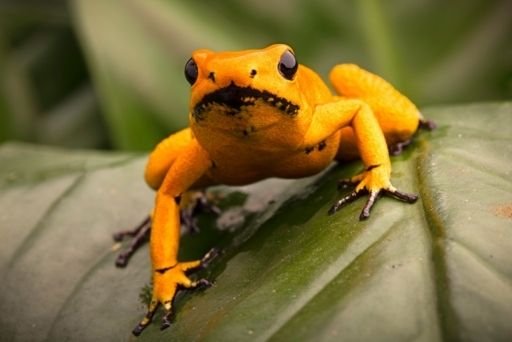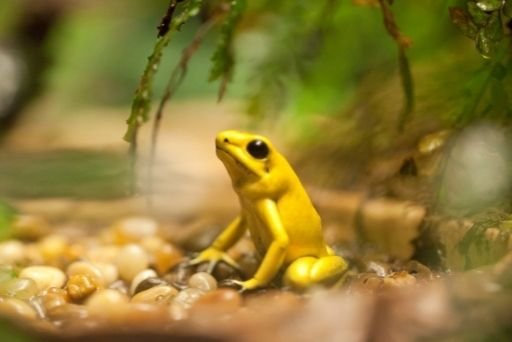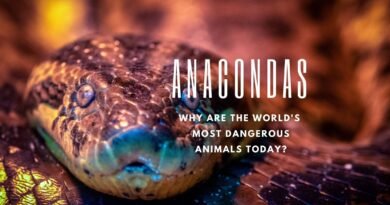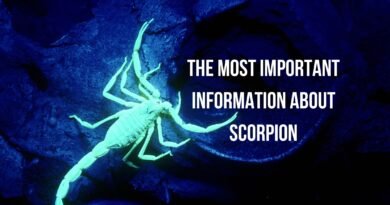Phyllobates Terribilis (Golden Poison Frog)- The most poisonous vertebrate on the planet
The Golden Poison Frog is one of the largest poison dart frogs. This frog is known for being one of the most toxic animals on the planet, with 1,900 micrograms of poison in a single frog.
In this article, we will help you learn about the most poisonous vertebrae on the planet. So, keep reading for the best experience. You are bound to find it useful.





Physical appearance
Golden Poison Frogs come in a rainbow of hues covering their entire bodies, ranging from mint green to yellow to orange and occasionally white. The most common color is yellow or deep yellow, which gives them their common name. The most toxic frog species is Phyllobates Terribilis. Phyllobates Terribilis, unlike most other members of the Dendrobatidae family, has a uniform body coloring rather than dark patches and stripes.
The strange protrusion from their lips is an obvious way to recognize these frogs. This provides the impression that the frogs are toothless. Instead, they have an additional bone plate in their jaw that protrudes outwards and mimics teeth. Each of these frogs’ feet has three toes. The length of each outside toe is nearly identical, but the middle toe is longer than the other two. Females are often larger than males as adults, and females can reach 50 to 55 mm in length, while males average 47 mm.
Habitat
Lowland Amazonian jungles along Colombia’s Pacific coast are home to Golden Poison Frogs. This is a very humid area with up to 5 meters of rain per year and a minimum of 1.25 meters. Their location is characterized by a mountainous topography with heights ranging from 100 to 200 meters, patches of damp gravel, few saplings, and minimal leafy waste. They are terrestrial animals that live on the forest floor, but their young are dependent on freshwater.
Reproduction
Males and females of Phyllobates Terribilis are Polygynandrous, meaning they have numerous mates. Only a few cases of courtship and egg-laying have been documented in captivity. Two or more male frogs and one female frog were used in each breeding.
Males use a range of high-pitched cries to attract females. Mating can be described as a furious frenzy in which individuals rush around while depositing eggs. Since the movement is so quick and takes place under the cover of plants, it’s difficult to see. Golden Poison Frogs, like all frogs, go through a complete metamorphosis. Small clutches of less than 20 eggs are produced and carried by males to small pools of water, where they mature and transform into froglets.

Lifespan
Golden Poison Frogs survive up to 5 years in the wild. These frogs have few predators due to their high toxicity levels, contributing to their extended lifetime. Since these frogs have only been studied in captivity, where they have lived up to 5 years, their lifespan in the wild has not been established.
Eating habits
Insectivores Golden Poison Frogs feed mostly on Ant species, and they also eat termites and beetles, which are small invertebrates. To catch prey, Golden Poison Frogs use their long, sticky tongues. They hunt and attack victims in one swift motion; the mechanics of this movement are difficult to see with the human eye. The prey has an adhesive tongue that allows it to attach to its mouth to aid in the capture.
Predator habits
Golden Poison Frogs are best known for their extremely potent poison. They release toxins that are twenty times stronger than any other poison dart frog toxin. Predators are warned of their severe toxicity by their brilliantly colored bodies, which is the frog’s primary anti-predator defense.
Toxins are chemicals that are particularly powerful voltage-gated sodium channel modulators. They maintain the channels open and irreversibly depolarize nerve and muscle cells. Arrhythmias, fibrillation, and eventually heart collapse may result from this harmful action. When these toxins are mistakenly transferred to human facial skin, they can create a burning sensation that lasts for several hours.



Positive economic importance
Golden Poison Frogs are the most highly toxic of all frogs. Colombian tribes such as the Embrace and Choco Indians poison their blowgun darts with poison released from the frogs’ skin. The frogs’ backs are wiped after the darts have been heated over a fire. The heat enables the poison on the back of the frog to wet, making it easily accessible.
Darts that have been poisoned can kill for up to two years. These tribes can catch small animals for sustenance, thanks to the poison. Captured, bred, and sold as pets, these frogs are also being tortured in other ways. This is due to their decreased toxicity after being confined in captivity for some time. Medical studies are also being conducted to investigate if these toxins can be turned into muscle relaxants, anesthetics, or heart stimulants. It’s possible that it could even outperform morphine as an anesthetic.




